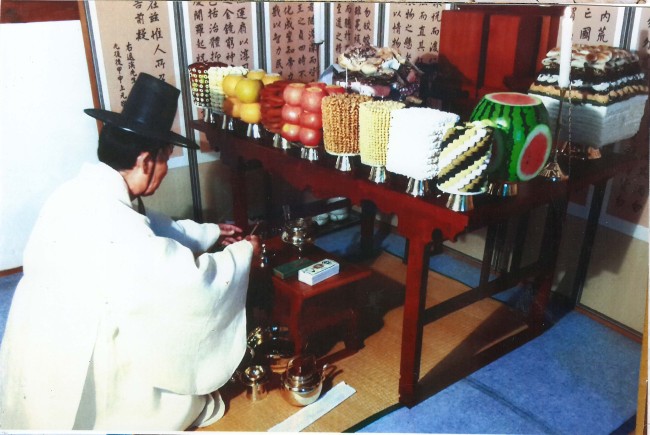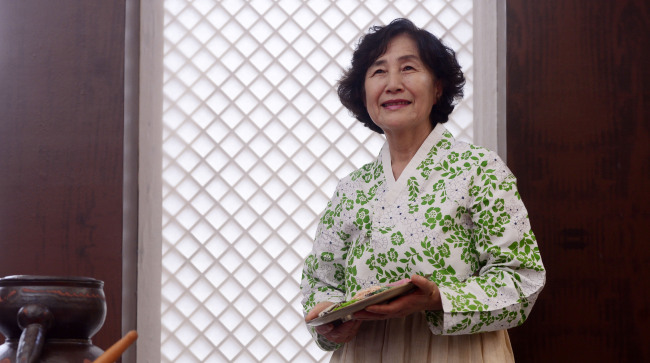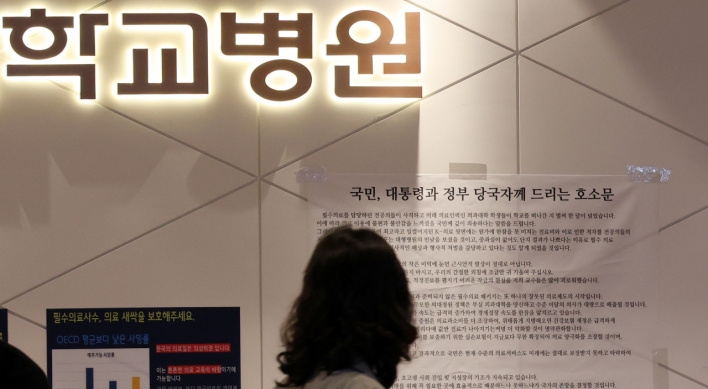Finding beauty in ancestral rites
Seokgye Lee clan carries on centuries-old culinary heritage
By Korea HeraldPublished : Sept. 5, 2014 - 20:12
As the Chuseok holiday approaches, the life of Cho Gwi-bun is beginning to resemble that of a student preparing for an important exam.
From a long to-do list, which mostly consists of grocery shopping, preparing the ingredients and cooking, she prioritizes and organizes daily tasks and gets her act together according to her plan. She tries to stay fit for the big day, avoiding any chance of catching a cold or flu.
All of her endeavors will culminate in the setting of a table on Chuseok morning.
The table, with piles of food placed on plates on top of it, is the centerpiece of a traditional ancestral ritual called charye.
Her husband will offer the dishes to ancestors in a symbolic gesture of honoring the dead and confirming the continuity of the family lineage. In attendance will be a handsome number of guests ― she’s expecting around 30 this time ― whom she has to serve a meal to afterward.
From a long to-do list, which mostly consists of grocery shopping, preparing the ingredients and cooking, she prioritizes and organizes daily tasks and gets her act together according to her plan. She tries to stay fit for the big day, avoiding any chance of catching a cold or flu.
All of her endeavors will culminate in the setting of a table on Chuseok morning.
The table, with piles of food placed on plates on top of it, is the centerpiece of a traditional ancestral ritual called charye.
Her husband will offer the dishes to ancestors in a symbolic gesture of honoring the dead and confirming the continuity of the family lineage. In attendance will be a handsome number of guests ― she’s expecting around 30 this time ― whom she has to serve a meal to afterward.

Cho is the wife of the 13th-generation heir of the Seokgye Lee clan in Yeongyang, North Gyeongsang Province.
They say in Korea that it’s hard to be a jongson, the master of a clan, but even harder to be his wife, a jongbu.
In fact, to modern-day Koreans, the title of jongbu is virtually synonymous with outdated concepts like the wife’s duty, responsibility and dedication to her in-law’s family.
But Cho is cool with it. It’s just the way her life is.
“I have a motto,” she said, when asked how she keeps up with a life that requires her to put duty first and self-interest later: “Enjoy it, if it’s unavoidable.” Then, smiling, she added, “I am now kind of a professional of jesa.”

The interview took place in Seoul on Aug. 26, less than two weeks before Chuseok, which this year falls on Sept. 8. She was participating in a local food festival here and was planning to spend a few more days in the capital before heading home.
When she got back home, she said, she would have to start preparations for jesa right away.
“Jesa” is the general term for the annual rituals to honor one’s ancestors. A type of jesa observed on traditional holidays such as Chuseok and Lunar New Year is called “charye.”
To younger Korean women, the labor of preparing jesa food is a major source of complaints, and a big reason why they shun oldest sons as candidates for their husband.
Cho usually starts preparations about 10 days before the rite. “Because it’s a lot of work, I need to get done whatever is there that can be or must be done beforehand.”
More than 30 plates go on the jesa table. The food ranges from soups, meats, fish, fruits and vegetables to confectionaries. Liquor is also included.
As for rice cakes, a staple on the jesa table, she makes 10 different kinds and piles them up on one plate. That means all the rice cakes are just one in the count of over 30 items.
Every dish must be prepared with care and using age-old methods that have been passed down through generations to her.
That is very important for her because she and her in-laws take great pride in the culinary heritage of the clan, which can be traced back to the mid-Joseon era.
That heritage culminated in an ancient recipe book called “Eumsik Dimibang.”

Written in 1672 by Jang Gye-hyang, the wife of Lee Shi-myung (1590-1674), a Joseon-era scholar and the clan’s founder, the book was the first food encyclopedia in Korean and the oldest cookbook in East Asia to be written by a woman.
“I barely finished this book because of my failing eyesight, so follow the recipes exactly. Daughter, each of you should copy them but don’t even think about taking the book. Please take good care of the book so that it doesn’t get damaged,” Jang wrote in the afterword to the book.
So, on top of jesa, Cho is responsible for carrying on the family’s gastronomic tradition and passing it down to the next generation.
“When I first married, I had no one to ask. My mother-in-law had already passed away,” she recalled. “I learned by studying the book, and when I hit stumbling blocks, because the book only has words and no drawings, I consulted historians to master the recipes.”
She got more than enough chances to practice the age-old cooking methods through jesa. Until 2000, when the family decided to consolidate and combine the number of rites they observe, she set the jesa table 15 times a year.
“I never strayed from the rules. Because I know if I make that very first compromise, it will never be my last,” she said.
She thinks there is a beauty to the jesa ritual.
“It’s a truly Korean scene ― relatives come gather in memory of their ancestors and share a good meal. It’s an important cultural heritage,” she said. “My role is to preserve it and pass it down to the next generation.”
After Cho and her husband, her only son and daughter-in-law will have to carry on as the next jongson and jongbu of the Lee clan.
How will they do? Will they be ready?
“I don’t care,” Cho said, trying not to pass judgment. “It’s up to them. It’s their decision. My responsibility is to preserve what has been passed down to me as long as I live.”
Still, she can’t help but feel skeptical when thinking about how society has changed and what other changes the future will bring. “You see, these days, jesa is just a formality. The meanings are lost. Think of the low birth rate now. Will people bother to continue jesa, if they don’t have uncles, aunts and other relatives (to invite and show it to)?”
For now, brushing aside the bitter feelings, she will concentrate on what she has been doing for the past 23 years as jongbu of the Lee clan. The next jesa is just a few days away.
By Lee Sun-young (milaya@heraldcorp.com)
-
Articles by Korea Herald



![[Herald Interview] 'Amid aging population, Korea to invite more young professionals from overseas'](http://res.heraldm.com/phpwas/restmb_idxmake.php?idx=644&simg=/content/image/2024/04/24/20240424050844_0.jpg&u=20240424200058)















